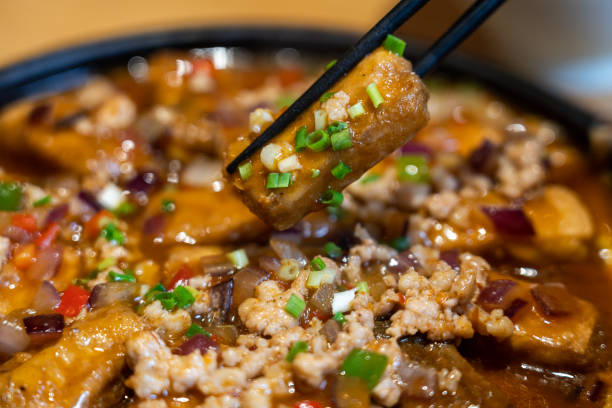You should choose food items that are likely to sell well when you’re selecting snacks for your concession stand or crafting a bar menu. Pizza, burgers and mozzarella sticks are all fan favorites. What is the secret ingredient that ties these delicious foods together? Umami is the secret ingredient that makes these foods so delicious. We’ll show you how to use it to make your menu items great. Find out more about umami flavor and where you can find it.
What is Umami?
Umami refers to the taste category that is associated with savory foods. Umami ingredients are high in glutamates and nucleotides. These amino acids can also be found naturally or when an ingredient has been cooked, fermented or aged. Umami is the fifth taste that our tongues can detect. Our brains have five different flavor profiles, which tell us what type of food we are consuming. These flavors include sweet, salty and sour, bitter, and umami. L-glutamate binds with the receptors of your tongue to trigger an umami flavor. This chemical reaction tells your brain that your meal contains savory flavors.
What does umami taste like?
Umami is the pleasant, savory flavor often associated with sauces, gravies, or broths. Umami can be described as smoky or earthy. Many people find umami difficult to describe. However, it is often paired with comfort foods such as cheese and Chinese food. Some foods may have umami flavoring. However, this can be activated in cooking by using the Maillard reaction. As the sugars and amino acids in the food reduce, this reaction gives the food a caramelized, smoky flavor.
Umami is also able to create a taste experience thanks to its flavor. The glutamates coating the tongue makes food feel richer and more satisfying. The fuzzy mouthfeel creates a lasting sensory memory, which can be activated by sight or smell. This makes us crave umami food frequently. Umami foods are often included on appetizer menus to increase impulse sales.
Foods with Umami
Umami can be found in ingredients, or it can be released during the cooking process. These are the most popular umami-rich foods:
- Aged cheese (i.e. Parmigiano Reggiano)
- Mushrooms
- Tomatoes
- Garlic
- Beets
- Corn
- Soybeans
- Soy sauce
- Seaweed
- Kimchi
- Fish Sauce
- Vegemite/ Marmite
- Fatty Meats (i.e., Bacon, Steak, Pork Chops
- Shrimp
- Anchovies
These ingredients will enhance the flavor of your meal.
Cooking with Umami
Umami enhances the flavors of your dish. It is an excellent way to make your menu choices memorable. These are some ways to add umami to your recipes.
- You can add umami-rich ingredients like tomatoes, garlic and shiitake mushrooms to your recipes.
- For a flavor boost, combine one Anchovy with your pizza sauce
- As your chicken sears, drizzle some soy sauce on it
- In your special marinades, add an umami liquid flavoring
- Pre-made “umami balls” can be added to your dish. These are made with a mixture of oysters, fish sauce, mushrooms and cured Ham.
- To bring out the flavor of your ground beef, add a dash of ketchup.
- For a soothing touch, add a teaspoon of miso to the soup.
- Sprinkle some Parmesan cheese on top of your pasta dish
- Stir fry with fermented Kimchi
- Use a special mayonnaise or aioli to make a dish with fish sauce.
- Sprinkle MSG powder on your entrees during cooking
What is MSG?
MSG, the crystalline form of monosodium glutamate, is known to be umami flavoring. Citric acid is the physical version of sour flavoring. MSG Powder can enhance the flavor and savoriness of dishes and sauces. MSG is most popular in Chinese, Thai and Japanese cuisines. However, it is gaining popularity all over the world. MSG is believed to make food more palatable and easier to eat. MSG can be added to any dish to enhance the complexity and depth of flavor without adding more salt.
Is MSG safe?
According to the U.S Food and Drug Administration, MSG can be consumed safely. MSG is known to cause nausea and headaches. It was discovered that MSG could cause nausea and headaches in a small number of people. This can be controlled by moderation for those who are sensitive to it.
Umami’s History
In 1908, Japanese chemist Kikunae Ikeda discovered the umami flavor. Ikeda studied Japanese dashi, a stock used in many Japanese dishes, on a molecular basis to determine the components that gave it its unique flavor. He discovered that glutamic acid was the main flavor molecule in the seaweed stock. It was named “umami” by him, a Japanese term meaning “delicious”, and it is called “umami”.
After researchers discovered that umami was a primary flavor and could not be combined with other primary flavors (sweeten, salty, sour and bitter), umami didn’t gain worldwide recognition until the 1980s. The “fifth flavor” was also awarded the title because umami is a tongue-specific taste receptor.

